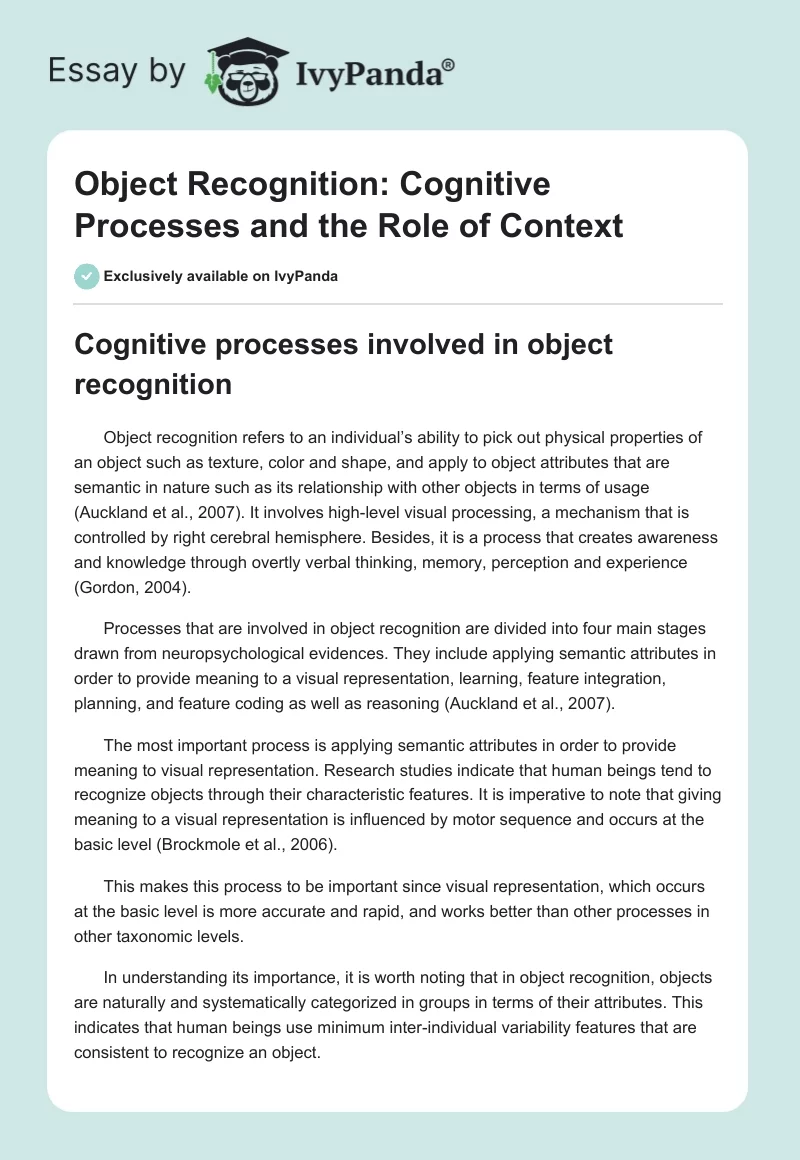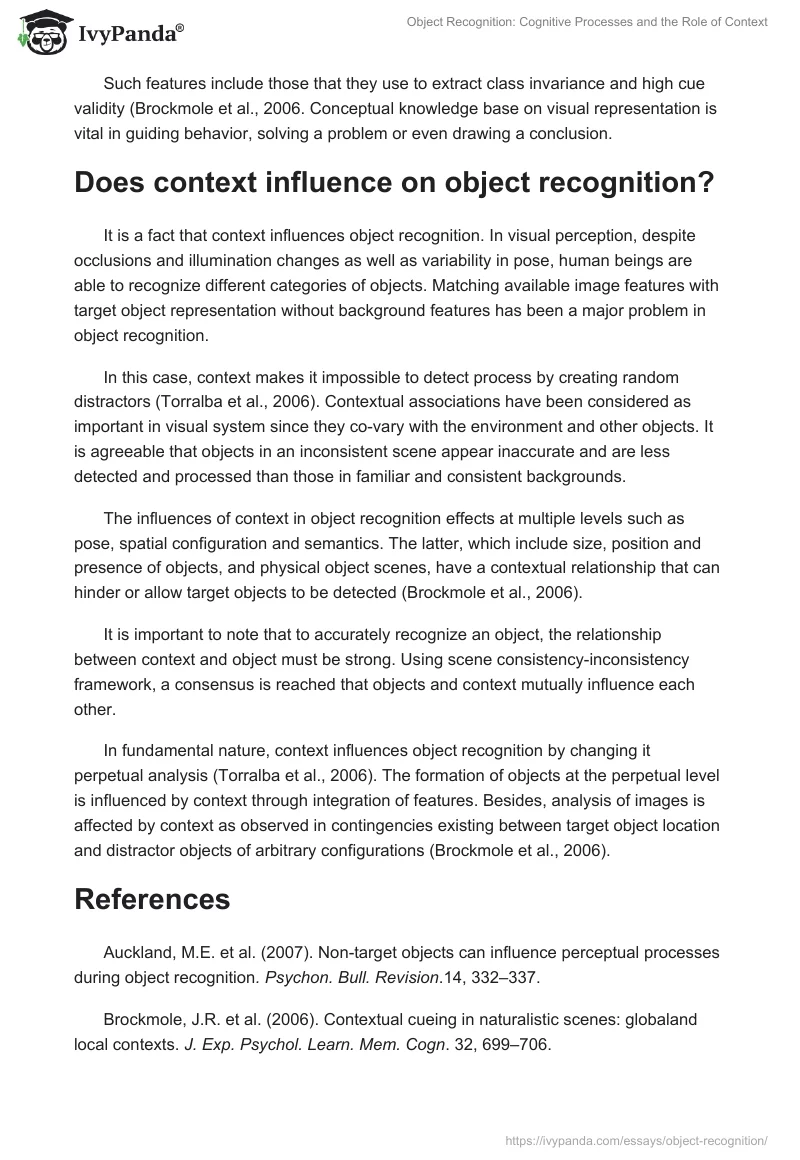Cognitive processes involved in object recognition
Object recognition refers to an individual’s ability to pick out physical properties of an object such as texture, color and shape, and apply to object attributes that are semantic in nature such as its relationship with other objects in terms of usage (Auckland et al., 2007). It involves high-level visual processing, a mechanism that is controlled by right cerebral hemisphere. Besides, it is a process that creates awareness and knowledge through overtly verbal thinking, memory, perception and experience (Gordon, 2004).
Processes that are involved in object recognition are divided into four main stages drawn from neuropsychological evidences. They include applying semantic attributes in order to provide meaning to a visual representation, learning, feature integration, planning, and feature coding as well as reasoning (Auckland et al., 2007).
The most important process is applying semantic attributes in order to provide meaning to visual representation. Research studies indicate that human beings tend to recognize objects through their characteristic features. It is imperative to note that giving meaning to a visual representation is influenced by motor sequence and occurs at the basic level (Brockmole et al., 2006).
This makes this process to be important since visual representation, which occurs at the basic level is more accurate and rapid, and works better than other processes in other taxonomic levels.
In understanding its importance, it is worth noting that in object recognition, objects are naturally and systematically categorized in groups in terms of their attributes. This indicates that human beings use minimum inter-individual variability features that are consistent to recognize an object.
Such features include those that they use to extract class invariance and high cue validity (Brockmole et al., 2006. Conceptual knowledge base on visual representation is vital in guiding behavior, solving a problem or even drawing a conclusion.
Does context influence on object recognition?
It is a fact that context influences object recognition. In visual perception, despite occlusions and illumination changes as well as variability in pose, human beings are able to recognize different categories of objects. Matching available image features with target object representation without background features has been a major problem in object recognition.
In this case, context makes it impossible to detect process by creating random distractors (Torralba et al., 2006). Contextual associations have been considered as important in visual system since they co-vary with the environment and other objects. It is agreeable that objects in an inconsistent scene appear inaccurate and are less detected and processed than those in familiar and consistent backgrounds.
The influences of context in object recognition effects at multiple levels such as pose, spatial configuration and semantics. The latter, which include size, position and presence of objects, and physical object scenes, have a contextual relationship that can hinder or allow target objects to be detected (Brockmole et al., 2006).
It is important to note that to accurately recognize an object, the relationship between context and object must be strong. Using scene consistency-inconsistency framework, a consensus is reached that objects and context mutually influence each other.
In fundamental nature, context influences object recognition by changing it perpetual analysis (Torralba et al., 2006). The formation of objects at the perpetual level is influenced by context through integration of features. Besides, analysis of images is affected by context as observed in contingencies existing between target object location and distractor objects of arbitrary configurations (Brockmole et al., 2006).
References
Auckland, M.E. et al. (2007). Non-target objects can influence perceptual processes during object recognition. Psychon. Bull. Revision.14, 332–337.
Brockmole, J.R. et al. (2006). Contextual cueing in naturalistic scenes: globaland local contexts. J. Exp. Psychol. Learn. Mem. Cogn. 32, 699–706.
Gordon, R.D. (2004). Attentional allocation during the perception of scenes. J. Exp, Psychol. Hum. Percept. Perform. 30, 760–777.
Torralba, A. et al. (2006). Contextual guidance of attention in natural scenes: the role of global features on object search. Psychol. Rev. 113,766–786.


